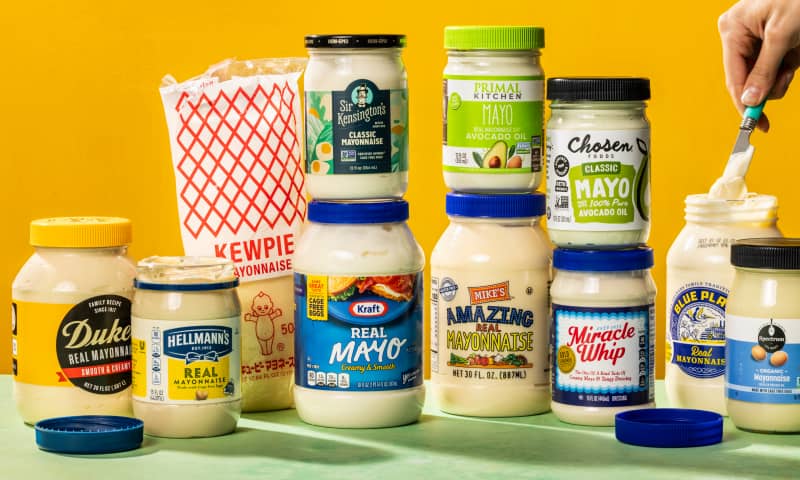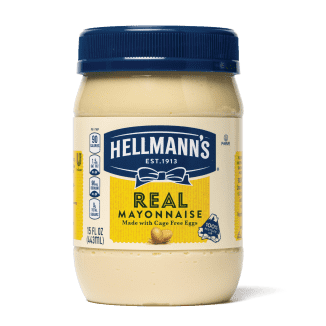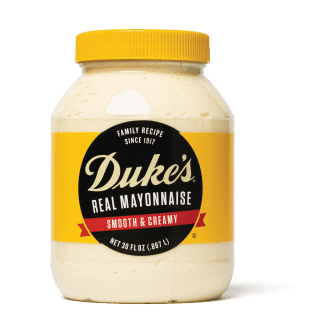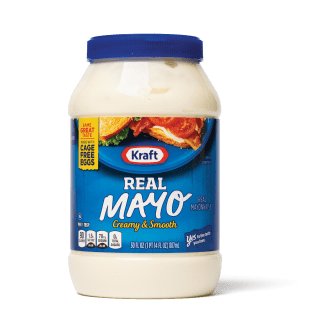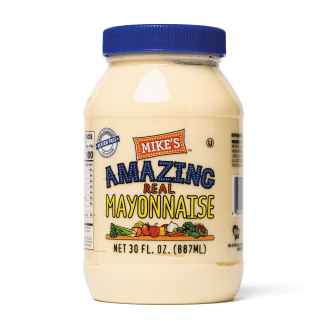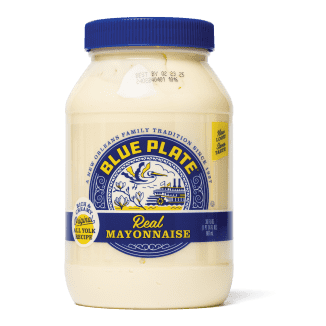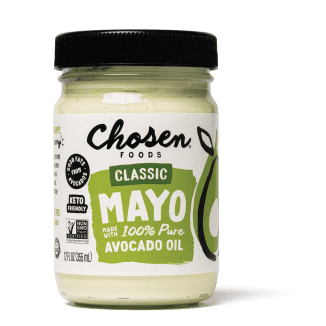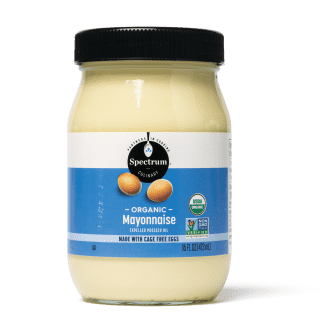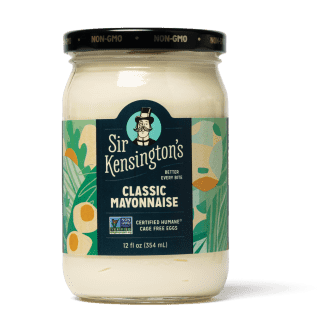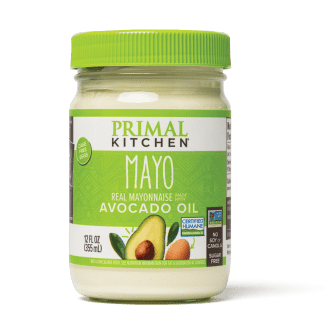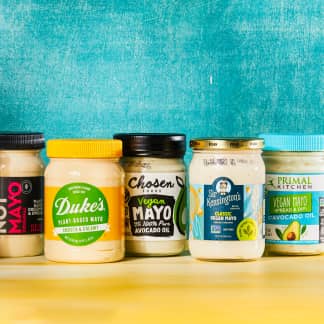Mayonnaise is the number one condiment in the United States, and Americans spent more than $2 billion on it in 2023. Hellmann’s, the most popular brand, had more than $900 million in sales, according to Circana, a Chicago-based market research firm.
Whether you’re a mayo lover or hater, it’s undeniably a staple in the culinary world. It adds moisture and flavor to sandwiches and helps bind burgers and salads such as tuna or potato, not to mention that it’s also in the base of sauces like blue cheese dressing. Mayonnaise is mostly oil, so it can even be used in place of fat in cake.


Mayonnaise adds a rich, creamy texture and savory flavor to spreads and dips.
Mayo is a prized ingredient outside of the United States too. It’s mixed into Korean Corn Cheese, slathered on Vietnamese Banh Mi, and served as a dip for fries in Belgium and Holland, among other uses. The French chef Escoffier even classified it as an addition to his famed list of “mother sauces.”
The Secret to Moist Chocolate Cake? Mayonnaise.
It might sound like the last thing you want in your baked goods, but the science of using mayo checks out.New brands, such as Mike’s Amazing, have emerged since we last tasted mayonnaise in 2012. Others, such as Duke’s and Kewpie, have exploded in popularity. We wanted to see how the competition stacks up. We tasted nine popular products available nationwide to find a favorite and inspected their ingredient labels and nutrition facts to see what explained our preferences. Is the United States’ best-selling brand actually the best, or will an underdog come out on top?

Mayo’s Mysterious Origins
Whether mayonnaise was invented in Spain or France is contested. It’s thought to have come into existence sometime in the 1700s and is perhaps named after Port Mahon in the now-Spanish island of Minorca. The story goes that when the French captured the island from the British in 1756, and they either invented the sauce in celebration of victory or learned it from the island’s residents, according to Larousse Gastronomique (2001).
Mayonnaise’s roots could also involve the word “moyeu,” an old French term for “yolk,” or the term “manier,” which means “to handle” (or “to stir”) in French, the book continues. Whatever its genesis may be, mayonnaise has become popular around the globe.
The Science of the World’s Greatest Sauce: Mayonnaise
And how to make your own.Commercial versus Homemade Mayonnaise
Mayonnaise is made with water, oil, eggs (whole or just yolks), lemon juice or vinegar, and often mustard. When we make homemade mayonnaise, we slowly stream the oil into the rest of the ingredients and use a whisk or food processor to whip the mixture into an emulsion. Because oil and water inherently fight to separate from each other, certain ingredients are also key in creating a stable emulsion. The lecithin in egg yolks and the polysaccharides in mustard (which also adds flavor) are emulsifiers. They surround the tiny droplets of oil, keeping them evenly distributed in the water by preventing them from merging into each other.


Homemade mayonnaise may have a shorter shelf life than store-bought versions due to its lack of preservatives.
The process is somewhat similar for commercial mayonnaise, though it’s done on a much larger scale. The eggs are pasteurized for food safety and to extend shelf life. Some industrial mayonnaise producers use yolks, while others may use whole eggs to minimize waste and eliminate the extra step of separating the ingredients.
What About Kewpie?
Mayo is a particularly important ingredient in Japan, used in everything from a tamago sando (Japanese egg salad sandwich) to a dip for karaage. Kewpie, a Japanese brand, has erupted in popularity in the United States in recent years, but it was invented in Japan by Toichiro Nakashima almost 100 years ago. It gets its name from the Kewpie dolls that were popular in the early 20th century.
It’s known for an extra-rich, savory flavor and comes in a distinctive squeeze bottle. Each bottle of Kewpie mayonnaise contains four egg yolks, said Takashi Nakayama and Jeremy Stoddard from Q&B Foods, the sister company of Kewpie. We chose not to include it in our main testing lineup because it is such a different product from the rest, containing many more egg yolks and unique ingredients such as MSG, which give it a deep, complex savory flavor. The original Kewpie imported from Japan contains MSG, but a version produced in the United States and sold at retailers such as Target and Whole Foods contains yeast extract instead, Nakayama and Stoddard explained. We tried both. Tasters noticed a distinctly eggy, buttery flavor in both products; the one containing MSG had a slightly bolder, salty taste.
Which Mayonnaise Tastes the Best?
We looked into sodium, sugar, and fat content but didn’t find any strong trends. The lowest-sodium brand was bland, but overall, the tasters were looking for balance. People wanted their mayo well rounded, a little bit tangy, a little sweet, and a little salty. One brand with a strong following, Duke’s, was notably tangier than others due to the addition of distilled and cider vinegar.


We found that the lowest sodium product (right) tasted bland. One of our favorites, Hellmann’s, had almost twice as much.
One factor that made a significant impact was preservatives (used to extend a product’s shelf life), such as calcium disodium EDTA, which some products we tasted contained. In fact, our favorite products all contained this preservative and our least favorite products did not. Most of the products that did not contain calcium disodium EDTA also used alternative oils, such as avocado or sunflower, instead of soybean or canola oil. Overall, tasters didn’t like these mayonnaises and described them as “artificial” or “chemical.” Tasters likely preferred the products that contained calcium disodium EDTA because those that didn’t may have begun to taste rancid from oxidation.

As for texture, the mayonnaises we tried were all fairly thick. Some were a bit “bouncy” or “gelatinous” when we tasted them plain. While those differences might show up in a dip or dressing, they weren’t noticeable in the tomato sandwiches.

The Best Mayonnaises: Hellmann’s and Duke’s
One of our favorite mayonnaises was indeed the top-selling brand in America: Hellmann’s. It received high marks when tasted plain and in tomato sandwiches. It was invented in 1920 by Margaret and Richard Hellmann. Tasters thought it was exceptionally well balanced and flavorful, thanks to a good amount of acidity and lemony flavor.
Tasters were also big fans of Duke’s Mayonnaise, a product invented by Eugenia Duke in 1923 in South Carolina. Especially popular in the South, Duke’s is known for its distinctive tang, which is from a duo of vinegars: distilled and cider. Our tasters called it “zesty” and “well seasoned.”
- Taste plain
- Taste in simple tomato sandwiches
- Samples were randomized and assigned three-digit codes to prevent bias
- Nutritional information was standardized for a 1-tablespoon serving size
